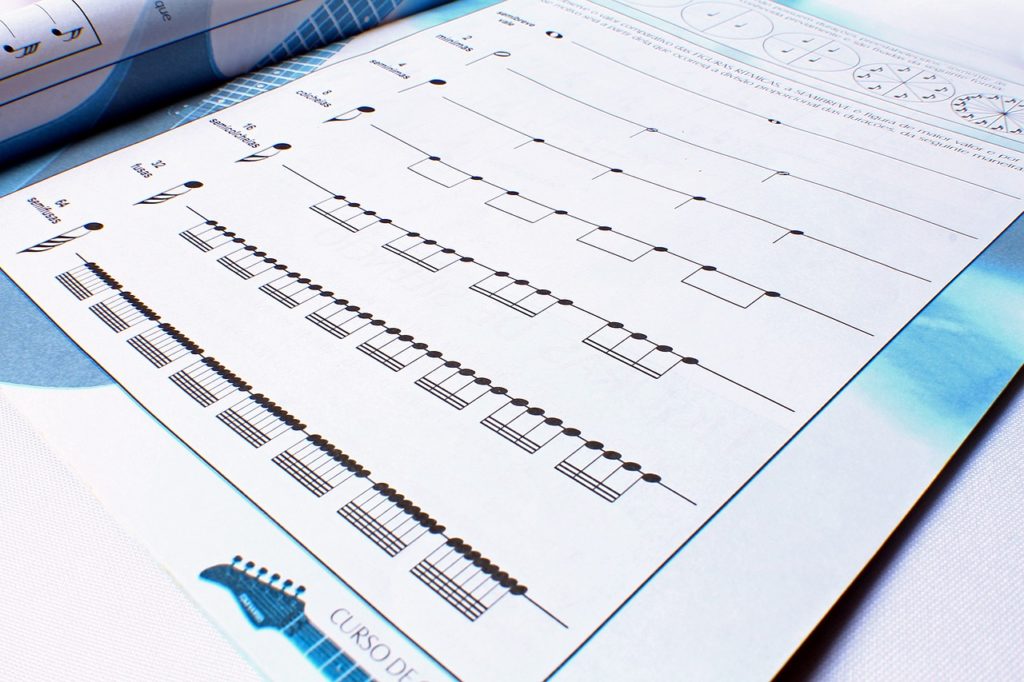Beginners, for an easy explanation of counting and clapping:
How to color code the counting numbers for classroom handouts:
- It’s easiest to import a TIFF of the colorized music example into Word.
- Color code the counting numbers by changing the font color.
- Save the file as a PDF, and email it to the students.
This example shows a pickup note at the beginning. Since beats 1, 2, and 3 are missing, the first note to be clapped is beat 4, which is colored red.
Mobile users: for best results reading the music, tilt your screen 90o to the right.


